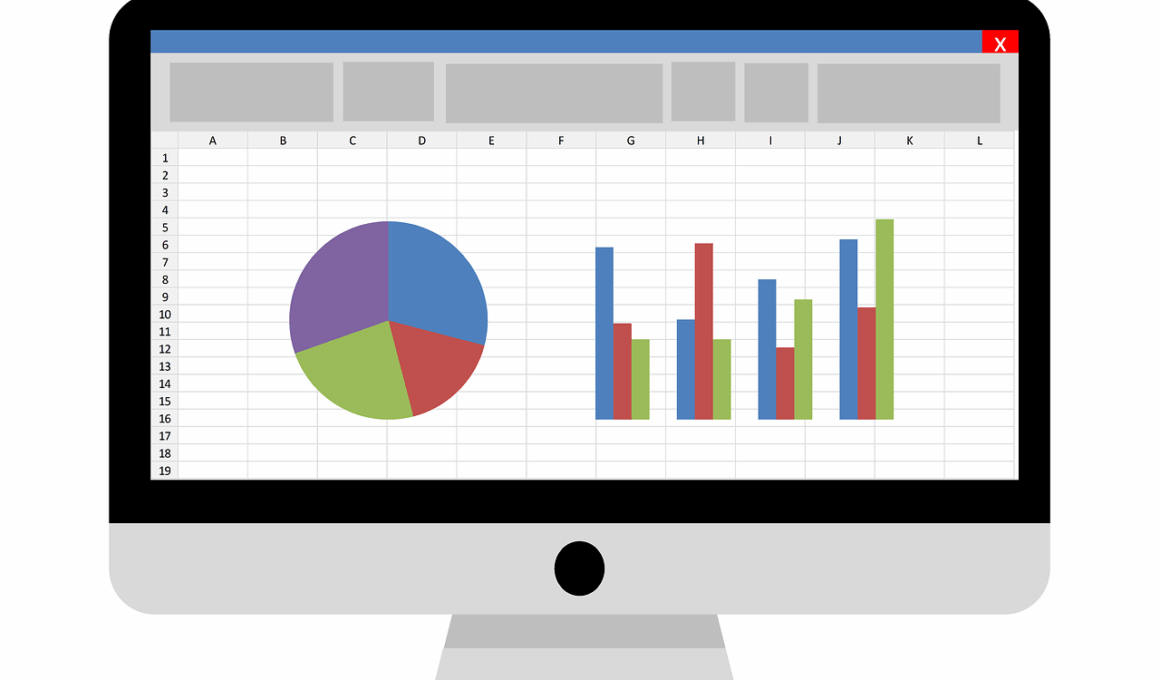Forecasting Debt and Interest in Financial Models
When it comes to financial modeling, accurately forecasting debt and interest payments is crucial for achieving reliable financial projections. To begin this process, you should gather all relevant data on outstanding debts, interest rates, repayment terms, and future cash flows. Precision in data collection is essential to maintain model integrity through various economic scenarios. Key aspects to consider include the types of debt, both fixed and variable, and the expected cash inflows that can cover these obligations. For effective forecasting, financial analysts often implement several methodologies. One common approach involves the use of historical data to identify trends that may affect future debt levels and interest rates. Additionally, scenario analysis can be performed to evaluate how different potential outcomes impact your financial model. Remember to include rigorous checks and balances to test the reliability of your forecasts. Creating a comprehensive debt schedule is advisable, which lays out the timing and amounts of each payment, ensuring oversight across multiple periods. This meticulous attention to detail helps ensure that the financial model will yield more accurate and actionable insights when it comes to strategic decision-making.
Understanding the impact of interest expense on a company’s financial health is critical. Interest expenses can significantly influence net income, cash flow, and ultimately shareholder value. It is important to grasp how interest rates fluctuate based on market dynamics. For variable interest rates, it is necessary to create assumptions about the potential range of future rates. These assumptions often derive from both historical data and market forecasts. Ensure your model can adjust these rates in real-time, reflecting immediate economic changes or shifts in central bank policies. Moreover, building in payment schedules that reflect both principal repayments and interest can aid in visualizing future cash flows. Consider utilizing Excel functions or financial modeling software to automatically calculate interest expenses based on your assumed rates. The integration of a robust sensitivity analysis can also help determine how changes to your interest rate assumptions affect overall financial outcomes. Try to include detailed write-ups within your financial model that document your rationale for chosen assumptions. Clarity in your model will not only help with internal understanding but also facilitate stakeholder buy-in as necessary.
Incorporating sensitivity analysis into your financial models is key for understanding risk. By adjusting debt levels and interest rates, you can quantify their effects on profit margins and overall valuation. Consider creating scenarios that cover best, worst, and most likely outcomes. This assists stakeholders in visualizing potential financial situations. Sometimes, additional factors such as inflation and economic growth should also be incorporated into your analysis. By devising alternate debt schedules within your model, you can simulate various financial environments and their unique implications. Keeping clear documentation of these assumptions and results will greatly enhance communication with stakeholders. Utilize graphical representations to illustrate varying outcomes; charts can make the information digestible and actionable. It is also valuable to train staff on how to appropriately navigate these models. They need decision-making tools to adjust for economic realities. Cross-referencing between financial statements and forecasts will help maintain alignment in your financial modeling approach. Another effective technique is conducting peer reviews on model structures and outputs. This ensures the robustness of your forecasts and promotes a culture of continuous improvement.
Debt Management Best Practices
Effective debt management is fundamental to maintaining a healthy financial position. Companies should embrace rigorous strategies to reduce risk. Key factors include regularly assessing debt loads against income and forecasting cash flow demands. Payment structures must be scrutinized to ensure financial flexibility. Likewise, developing contingency plans for unforeseen downturns can aid in navigating these challenges. For instance, creating lines of credit can supplement cash reserves in times of need. This type of financial preparedness can ultimately mitigate the negative consequences of rising interest rates. Moreover, organizations should consider refinancing heavy debts at more favorable terms whenever possible. This process can substantially reduce interest costs over time. Additionally, prioritizing debt repayment by focusing on high-interest liabilities first can lead to improved financial health. Regular communication with lenders will also help to maintain a good relationship and negotiate better terms when required. Transparency in these relationships is invaluable and can yield benefits in difficult times. Lastly, ensure prudence in expanding credit lines without jeopardizing financial health. A well-balanced approach to debt management supports both stability and growth.
The relationship between debt and interest rates is dynamic and often complex. As financial markets evolve, continuous monitoring of both internal and external factors is necessary. One notable factor is the prevailing economic climate, which can greatly influence borrowing costs and repayment schedules. It is advisable to pay close attention to central bank policies, as shifts in interest rates will directly impact financial modeling outcomes. Furthermore, geopolitical tensions can add unexpected volatility to interest rates; be prepared to adjust your assumptions based on real-time assessments. Analyzing peers in your industry can also provide context around common debt levels and acceptable interest expenses. Utilizing these benchmarks allows for more informed decision-making processes. Incorporating comparative analyses into your financial models will enhance their robustness and relevance. Additionally, forming strategic alliances with financial advisors could optimize your approach to debt management. Together you can explore avenues for reducing overall borrowing costs and risk exposure. By embracing innovative solutions, you can safeguard your organization’s financial well-being while positioning it for opportunities that may arise during unpredictable market conditions.
Lastly, ongoing validation of your financial models is essential to ensure accuracy. Constantly updating your assumptions based on new data provides a clearer understanding of your financial obligations. Regular scenario planning and reviews will aid in uncovering potential crises before they materialize. You may also consider integrating advanced modeling techniques, such as Monte Carlo simulations, to assess risks comprehensively. This method considers multiple variables, allowing for a detailed examination of potential future outcomes. Creating a culture of accountability within your teams promotes this practice. Sharing findings and results leads to collective learning and informed adjustments. Utilizing up-to-date technology can also enhance the effectiveness of your forecasting efforts. Collaborative tools help streamline communication, enabling faster decision-making processes. Training sessions focusing on model usage and interpretation empower team members to make significant contributions. As your financial forecasting evolves, it becomes pivotal to stay committed to transparency in assumptions and methodologies. This will not only strengthen stakeholder trust but will also pave the way for future success. Ultimately, maintaining an agile approach can significantly improve forecasting accuracy and, subsequently, organizational resilience.
In conclusion, forecasting debt and interest in financial models is a multifaceted process requiring attention to detail and proactive management. By implementing best practices in debt modeling, you can enhance accuracy and financial clarity. Continuous assessment of interest rate fluctuations and their impact on debt obligations must remain a priority. Keeping flexibility in mind as part of your financial strategy enables you to adapt as conditions change. Encourage a collaborative environment where team members can learn from one another and share insights. This knowledge-sharing will bolster the quality of your financial models significantly. Additionally, utilizing technology for data management and analysis will provide invaluable support in real-time decision-making. Incorporating feedback will help to refine models over time and maintain relevance across changing market conditions. The ability to anticipate and respond to differing scenarios will equip your financial team with the tools needed for future success. Above all, emphasizing thorough documentation and robust oversight will further strengthen your financial modeling practices. In the end, the goal is to build a reliable financial forecasting framework, facilitating better strategic moves on behalf of the organization.
The complexity of financial modeling cannot be overstated, particularly when measuring debt and interest components. Essential to this complexity is understanding the quantitative relationships between cash flow, interest rates, and debt levels. Accurate projections necessitate recognizing both macroeconomic influences and firm-specific nuances. Financial teams should focus on integrating various data sources to generate a cohesive outlook. Furthermore, embracing flexibility in financial assumptions allows for a more dynamic approach to forecasting. Leveraging scenarios where different interest rates or debt levels apply is increasingly relevant in volatile environments. Scenarios should be formulated based on historical data points while also considering current market indicators. Adopting the principles of continual improvement will ensure your financial models resonate with actual performance over time. Collaboration across various disciplines can help attain more comprehensive insights into the different factors driving financial results. Encourage feedback that leads to developing innovative modeling techniques and tools. Engaging in thorough sensitivity analysis helps identify weak points that require attention. Finally, be prepared to modify your approach based on performance reviews and market shifts.


